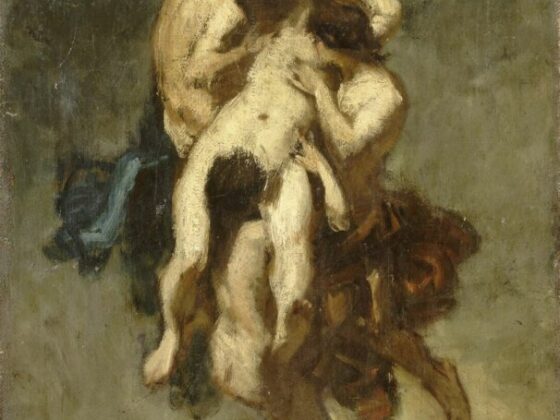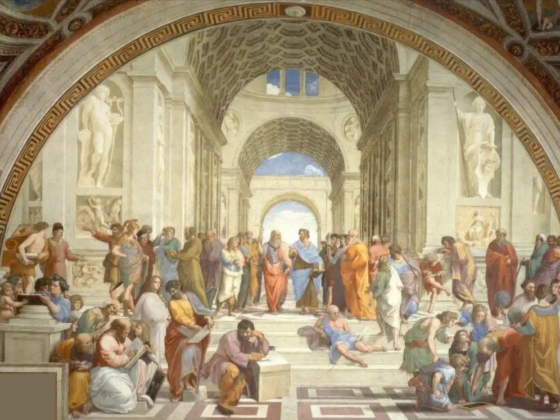Long before the invention of the high-tech camera, there was only one way to capture an exact moment in time visually, and that was to paint it. Whether it was a portrait, landscape, or historical event, if someone wished to immortalize something, they would have to put it on canvas.
There have been hundreds of said paintings depicting all sorts of iconic moments in time throughout history. These include prehistoric mythologies, religious stories, famous battles, or pivotal historical events.
Practically speaking, though, most of these paintings fall into two main categories: a significant celebration of somebody’s life or a substantial celebration of somebody’s death. Despite the seeming contrast, these categories remind us of the same thing. Mainly, events in time are merely fleeting moments, and time waits for no one.
The Coronation of Napoleon – Jacques Louis David
Prolific French painter Jacques Louis David was widely considered the best of his era. However, his Neoclassical painting style and complex historical adaptations marked a change in taste and style at the end of the 18th century.
His impressive and exquisite painting of the Coronation of Napoleon becoming the emperor of France is perhaps his premier and prestigious piece. The painting lavishly and fantastically portrays the moment when Napoleon takes the emperor’s crown into his own hands.
His wife Josephine kneels before his feet while Pope Pius VII sits beside him. The hall of Notre Dame is filled with essential dignitaries and church members who all stand witness to Napoleon essentially crowning himself. To commemorate this momentous event, David painted the piece on a massive scale, standing at over thirty feet wide and twenty feet high.
The Assassination of Caesar – Vincenzo Camuccini
Vincenzo Camuccini was an Italian Neoclassical painter specializing in religious and historic paintings. During the period in which he lived, he too was considered the premier academic painter in all of Rome.
His painting of the assassination of the first Roman Emperor Julius Caesar exemplifies his talents. The painting wonderfully depicts the historical event from the year 44 B.C. when the beloved emperor was betrayed and said to be stabbed twenty-three times by his fellow senators.
The beautiful use of color within the painting greatly amplifies the emotions on both the attacker’s faces and the seemingly shocked witnesses. The emotion captured on Caesar’s face is one of beautiful sorrow, as he is slain under the stoic statues of the onlooking Roman Gods.
Entry of Alexander into Babylon – Charles Le Brun
Charles Le Brun was a phenomenally gifted French painter during the Baroque period. He is known to be one of the most impactful artists of the 17th century and was dubbed by King Louis XIV as the greatest French artist of all time.
Of all Le Brun’s fabulous work, he mainly seemed to hold particular interest and fondness for the history of Alexander the Great. He painted several spectacular paintings of key moments in Alexander’s triumphant life, and none are more exquisite than his depiction of Alexander entering the ancient city of Babylon.
This epic painting is beautifully photogenic and almost photographic, and it must have taken Le Brun countless hours to perfect. It is beautifully alive, and with so much happening in the painting, it is a feast for the eyes. Furthermore, as most of the existing historical accounts have now been lost, the painting stands as one of the only sources of the event left intact.
The Last Day of Pompeii – Karl Bryullov
Karl Bryullov was a famous 19th-century Russian painter dubbed by many as “Karl the Great.” He is believed to be one of the leading figures responsible for the transition of Neoclassicism to the Romanticism style of painting.
His heart-stirring painting of the eruption of Mount Vesuvius in Pompeii in 79 A.D. is perhaps the best example of this transition and Bryullov’s work. The scene itself is beautifully dark and gripping in every aspect.
The hellish red and black, lightning-filled sky accompanied the helpless horror on the faces of the doomed people involved, making this historic painting truly one of the most delicate and frightening ever conceived.
The Death of General Wolfe – Benjamin West
Benjamin West was a British-American painter who depicted many famous historical scenes, such as The Treaty of Paris, The Death of Nelson, The Death of General Wolfe, and Benjamin Franklin drawing electricity from the sky, to name just a few.
His painting of the Death of General Wolfe is perhaps his most vivid and prolific piece. It depicts the historical event of the Battle of Quebec, which was a pivotal event in the Seven Years War that ultimately decided the fate of the French colonies in Canada.
In his death, General Wolfe became a British national hero. To commemorate this, West portrays Wolfe as an almost Christ-like figure, and the painting is said to resemble the Christian Lamentation scene in which the Virgin Mary holds Christ.
The scene has been subject to interpretation and analysis, and it is believed to hold much more profound significance and symbolism within it. The painting broke many artistic rules at the time and is considered one of the best-known images of all art of the 18th-century.
The Bottom Line
These paintings are just a few in the vast catalog of those retelling and recreating some of history’s most significant events. Not all may be entirely historically accurate, but they are all fantastical preservers of the stories and history from which they were inspired.








